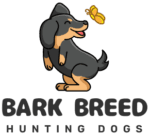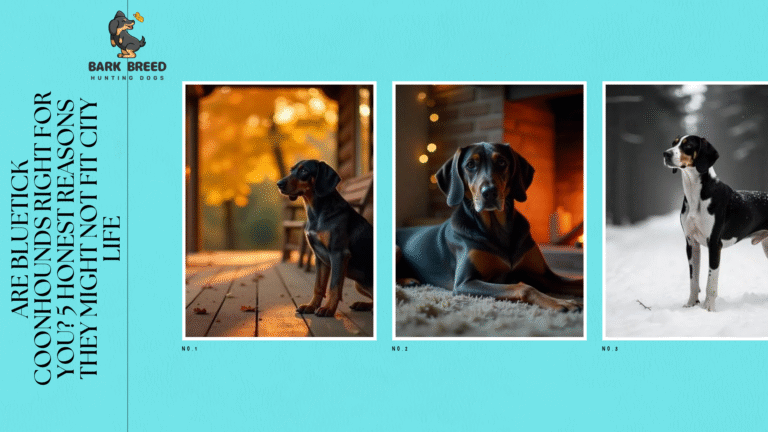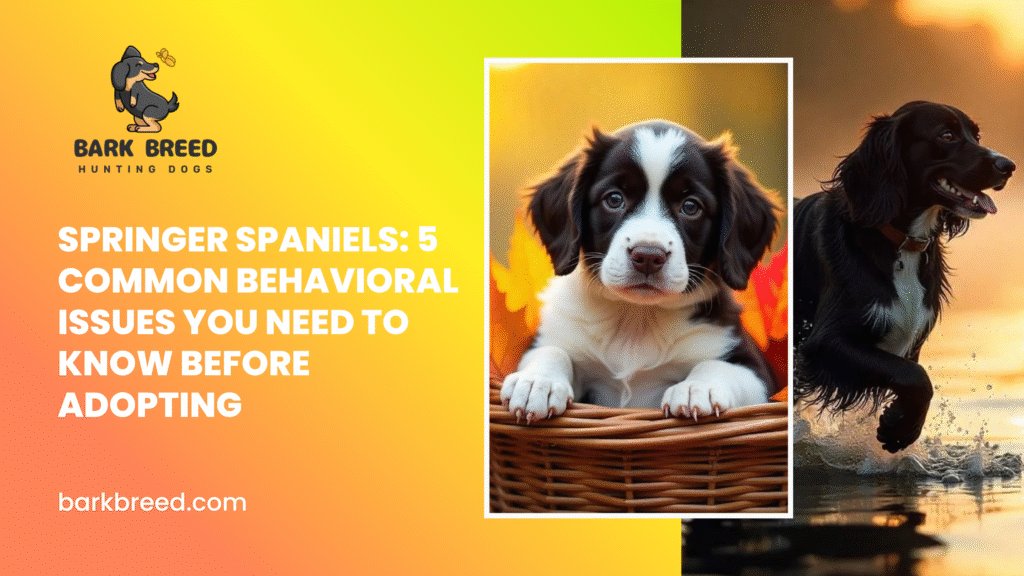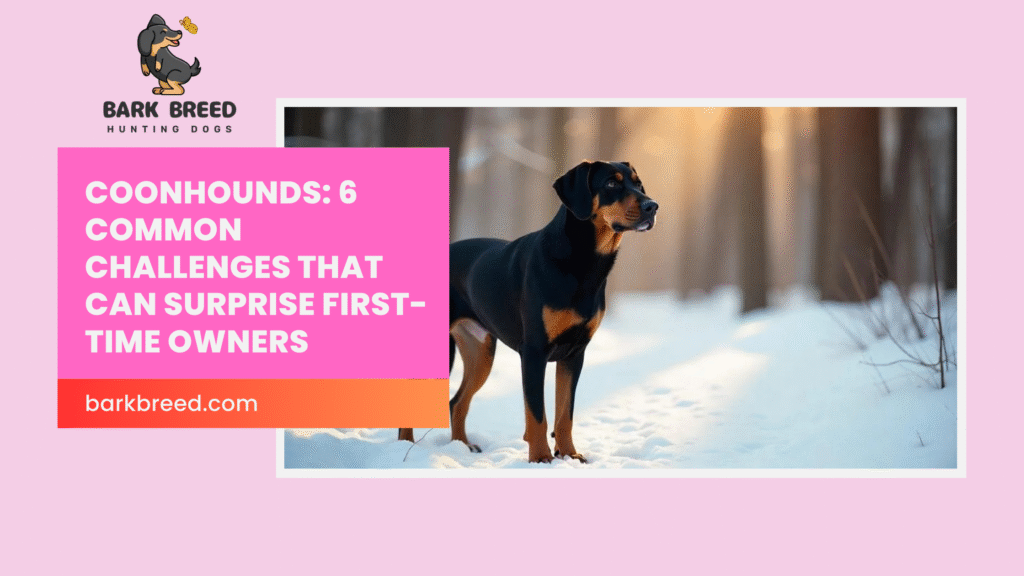- Introduction
- Introduction: Thinking of Bringing a Bluetick Coonhound to the City? Read This First
- 1. High-Energy, High-Stamina: Your Apartment Isn’t a Forest
- 2. Loud and Vocal: That Signature Bay Isn’t for Neighbors
- 3. Strong Scent Drive: City Smells Don’t Satisfy Their Nose
- 4. Independent and Stubborn: Not Ideal for First-Time Dog Owners
- 5. Not Built for Solo Living: They Crave Companionship
- Conclusion: Bluetick Coonhounds Thrive with Space, Purpose, and Pack Time
- FAQs
Introduction
Introduction: Thinking of Bringing a Bluetick Coonhound to the City? Read This First
Bluetick Coonhounds have a piercing appearance, undying allegiance, and an extraordinary sense of smell-only it is really a deception. These are not the dogs that have been bred to go out hunting long and hard on the open land, but to negotiate cramped apartments and avoid traffic on busy streets.

Their soulful eyes and rugged beauty attract many novice dog owners who realise too late that their high energy, loud voice, and natural instincts may be a hard match with inner city life. Although bringing up a Bluetick Coonhound in the city is possible, it will only succeed with adamant commitment, ingenuity, and time.
In this article, we are going to deconstruct five candid reasons why Bluetick Coonhounds may not be the ideal breed to live in a city setting, so you can make an informed decision before adding one to your household. Does this sound like a dream of city folks to possess such a wonderful hound? Before you sign up to own one, here is what it really takes to own one of these beautiful canines.
1. High-Energy, High-Stamina: Your Apartment Isn’t a Forest
Bluetick Coonhounds were created with an objective of one thing or ai, and that is to trail relentlessly and over rocky paths hour after hour. This translates into the fact that they are not satisfied with a walk down the block or a visit to the dog park. These are dogs that require intensive exercise on a daily basis–lots and lots.
This is an issue that exists in an urban setting. Tiny yards and apartments simply couldn’t provide them the space that Blueticks prefers. Add in leash-only walks and incessant noise, and your Coonhound is going to get pent up in a short time. Absence of physical outlets will most likely result in signs of such frustration, e.g., chewed furnishings, whining, pacing, or refusing to come out of the hole.
Suppose you reside in an urban area, keeping a Bluetick will involve shoehorning in regular long walks, jogging, hiking, or dog sports like scent tracking or agility on a daily basis. Their abundance of energy is a problem without such an outlet, instead of an asset.
2. Loud and Vocal: That Signature Bay Isn’t for Neighbors

Bluetick Coonhounds are not quiet; there is no denying it. This is among the reasons why they are such good trackers, that is, that famous hound bay, which can become a nightmare in an apartment complex. Indifferent to boredom, to the noise of their neighbors in the street, or full of animal delight, Blueticks will tell you (and your neighbors also) about it.
Along with a strong, bass voice, this breed is made with a voice that travels well on long hunting trips. There it rattles in a small living place-rather speedily. And unfortunately, you can not completely train out a hound when it comes to vocalization. It’s instinctual.
But if there is no thick wall surrounding you or noise-sensitive neighbors, the admonitions of the Bluetick with its howling and snarling are likely before long to be a source of complaint–or shall we better say, a headache and crisis in housing.
3. Strong Scent Drive: City Smells Don’t Satisfy Their Nose
Bluetick Coonhounds live by their nostrils. They have an intense sense of smell, which enables them to find a scent and pursue it with tenacity up to the point of disregarding orders. This is not obstinacy-this is instinct.
This characteristic is a reality in the case of urban centers. The sidewalks of the city have huge distractions: scraps of food, animal odors, refuse, and traffic. The cat may dash or attempt to take off in case the Bluetick detects a fascinating odor, rendering a walk erratic or even hazardous.
Then there is the city dog, who always must be put on a leash in the city, where off-leash tracking could be very stressful to a scent-oriented animal. Blueticks are high-strung and are susceptible to boredom or misbehavior without an activity, scent games, or nose work.
Check Out: Is the Black and Tan Coonhound Right for You? 5 Cautionary Truths to Consider.
4. Independent and Stubborn: Not Ideal for First-Time Dog Owners
Although Bluetick Coonhounds are intelligent, they are equally known as independent thinkers, epitomized by years of operating alone in the field. This increases their disinclination to obey, unlike breeds that were bred with the aim of obeying or having companionship.
Such independence may feel like stubbornness in the case of a first-time dog owner living in the city. Exposing that to an exciting urban setting with smells, sounds, and plenty of other distractors, training becomes all the harder. This stuff, such as leash manners, recall, and impulse control, is going to take some additional time, consistency, and creativity.
That is a huge worry? Blueticks are notoriously unreliable to recall, at least when they get a scent. This causes security concerns and tremendous frustration, especially in high-traffic locations or parks. As a latecomer to dog training, this breed can be more than you are prepared to handle- particularly in an environment with a lot of distractions.
5. Not Built for Solo Living: They Crave Companionship
Urban residents display the tendency to work long shifts and spend much time away from home. Still, Bluetick Coonhounds were made to work together with their pack- and they do not fare very well, when abandoned.
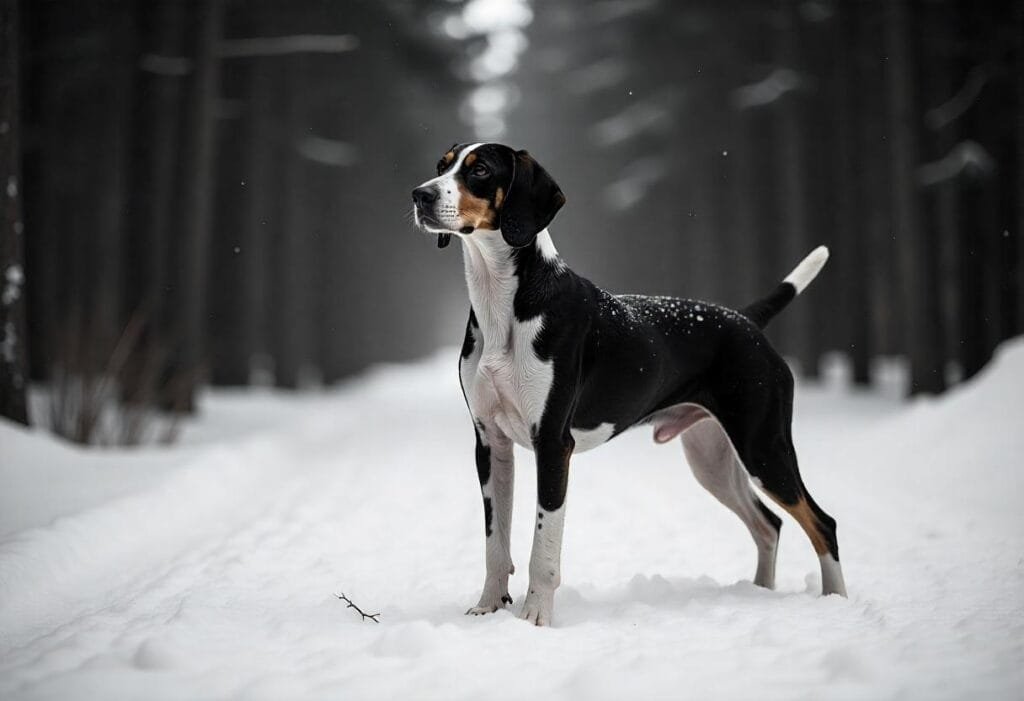
Blueticks can develop separation anxiety, howling, destructive chewing, pacing, and even efforts to escape when they feel under-stimulated and lonely. It is a beautiful thing in itself that they are so emotionally attached to their people, but it also implies that they need a routine, friends, and something with which they can identify themselves in order to be balanced.
Not all lifestyles are quite compatible with this breed, and yours might not be, either: If your life features long periods of time alone or a variable schedule of appointments, the dog may not get the mental and emotional attention it needs. And a bored Bluetick is a noisy, antsy, and very destructive one.
Conclusion: Bluetick Coonhounds Thrive with Space, Purpose, and Pack Time
Bluetick Coonhounds are fantastic dogs to partner-they are loyal, sporty, and motivated. However, they were not created to live in tiny apartments, make a few short walks, and spend more time alone. They also have high stamina, high voice, prey drive, and need to associate with people, which would best suit them under an active owner who will provide sufficient space and time.
The thing is that it is not a venture that one could not live in a city of it, but that there is a serious commitment to do so, and the daily enrichment as well as the experience of working with the behavior of the hounds should be ready at hand. And, when you are pretty well prepared to make yourself a Bluetick, the breed can be an excellent one. Otherwise, one might pay attention to the breeds that are friendlier to the urban style.
Pick a dog that fits your lifestyle, not what you wish it to be when it’s healthy.
For more info: Click Here.
FAQs
Q1: Do Bluetick Coonhounds apartment dogs?
It can, but quite hard. They need strenuous physical activity and exercises on a daily basis, intellectual and vocal practice. In the absence of these, it is nearly certain that there will be behavioral problems.
Q2: Are bluetick coonhounds yappy?
Well-yes, they are garrulous in nature. They developed a deep, baying voice of long-range development that is used to hunt. This can easily turn into a big problem with neighbors in an apartment.
Q3: What is the amount of exercise that I should give to a Bluetick every day?
Minimum 1.5 to 2 hours of daily physical exercise- combined with scent games or solving some exercises. A stroll around the block is nowhere near enough exercise for this high-energy breed.
